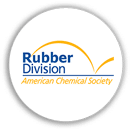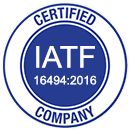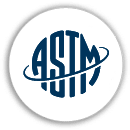ASTM D6204: Comprehensive Guide to Standard Test Methods for Rheological Properties of Unvulcanized Rubber
ASTM D6204 is a standardized test method developed by ASTM International for analyzing the rheological behavior of unvulcanized rubber compounds. It is widely used in industries that rely on high-performance elastomers, ensuring quality control, process optimization, and formulation consistency.
This standard primarily focuses on measuring the viscoelastic properties of rubber using rotorless shear rheometers, providing critical data on flow behavior, elasticity, and processability. By understanding these properties, manufacturers can enhance rubber mixing, extrusion, and molding operations.
Purpose and Importance of ASTM D6204
The goal of ASTM D6204 is to:
- Ensure Quality Control – Provides precise measurements to maintain batch-to-batch consistency in rubber production
- Optimize Rubber Processing – Helps manufacturers fine-tune mixing, extrusion, and molding for improved efficiency
- Support Research and Development – Assists in developing high-performance rubber formulations with tailored properties
- Facilitate Compliance – Many industries require ASTM D6204 compliance to meet regulatory and customer specifications
By implementing this standard, manufacturers can reduce defects, improve product durability, and optimize material formulations for enhanced performance.
Key Test Procedures in ASTM D6204
ASTM D6204 consists of several test methods, each addressing specific aspects of rubber rheological properties. Here is a breakdown of its major components:
1. Complex Shear Modulus (G) Measurement*
This test measures the stiffness and resistance to deformation of rubber compounds. Higher G* values indicate firmer, more rigid rubber, while lower values suggest softer, more flexible rubber compounds.
2. Phase Angle (δ) Analysis
The phase angle determines the balance between elastic and viscous behavior in rubber. Lower phase angles indicate solid-like behavior, while higher values suggest more liquid-like properties.
3. Stress Relaxation Testing
This procedure evaluates rubber’s ability to recover after deformation. It helps predict how rubber compounds will behave during manufacturing and in real-world applications.
4. Viscosity Assessment
Viscosity measurements determine rubber flow properties, which are crucial for mixing and extrusion operations. This test ensures rubber compounds meet processability requirements for different applications.
5. Temperature-Dependent Behavior
The test analyzes how rubber rheological properties change at different processing temperatures. It helps optimize curing, extrusion, and molding conditions for various formulations.
By conducting these tests, manufacturers can accurately assess the performance of unvulcanized rubber before it undergoes processing and curing.
Applications of ASTM D6204
ASTM D6204 is widely used in:
Automotive Industry
- Evaluates tire tread compounds for durability and processability
- Ensures rubber seals, hoses, and gaskets meet stringent performance standards
Construction and Infrastructure
- Assesses rubber compounds used in expansion joints, weatherproofing, and insulation materials
- Helps ensure long-term durability in extreme environmental conditions
Aerospace and Industrial Manufacturing
- Optimizes rubber seals, vibration dampeners, and gaskets used in high-performance applications
- Reduces manufacturing defects by ensuring precise formulation control
Research and Development in Elastomers
- Helps develop next-generation rubber materials with enhanced properties
- Supports the creation of sustainable, eco-friendly rubber alternatives
By applying ASTM D6204, industries can ensure rubber products meet high-performance standards while minimizing waste and improving efficiency.
Industries Benefiting from ASTM D6204
- Rubber Manufacturers – Ensure uniformity and quality in production batches
- Automotive and Aerospace Companies – Optimize seals, gaskets, and tires for better performance
- Research Laboratories – Develop new formulations for rubber innovation
- Regulatory Agencies – Ensure safety and compliance with industry standards
Advantages of Implementing ASTM D6204
- Enhances Process Control – Ensures rubber materials are optimized for efficient processing
- Reduces Production Waste – Early defect detection prevents material waste and rework
- Improves Product Performance – Helps design rubber formulations with superior mechanical properties
- Supports Industry Standardization – Ensures compliance with automotive, industrial, and regulatory requirements
By using ASTM D6204, manufacturers can achieve higher efficiency, cost savings, and superior material performance.
Challenges in ASTM D6204 Implementation
- Specialized Equipment Required – Rotorless shear rheometers need regular calibration and expert operation
- Technical Expertise Needed – Requires trained personnel to interpret complex rheological data
- Testing Environment Sensitivity – Temperature, humidity, and sample preparation must be carefully controlled
Despite these challenges, the benefits of ASTM D6204 compliance outweigh the difficulties, leading to better material performance and cost savings.








